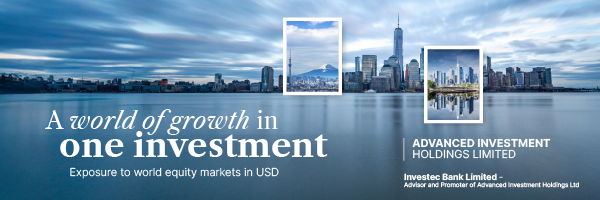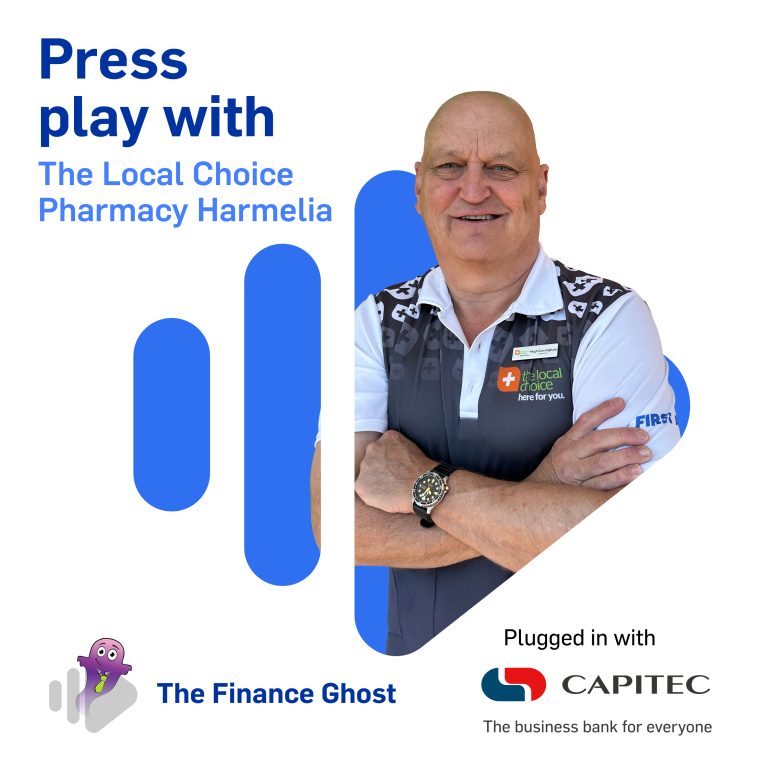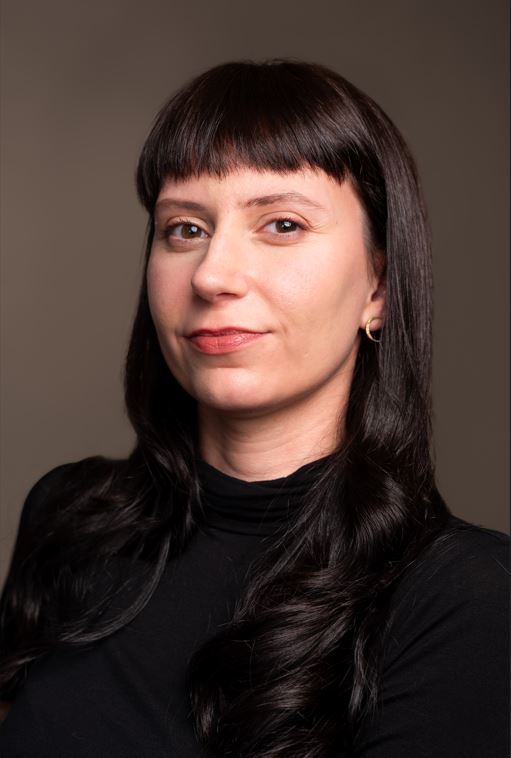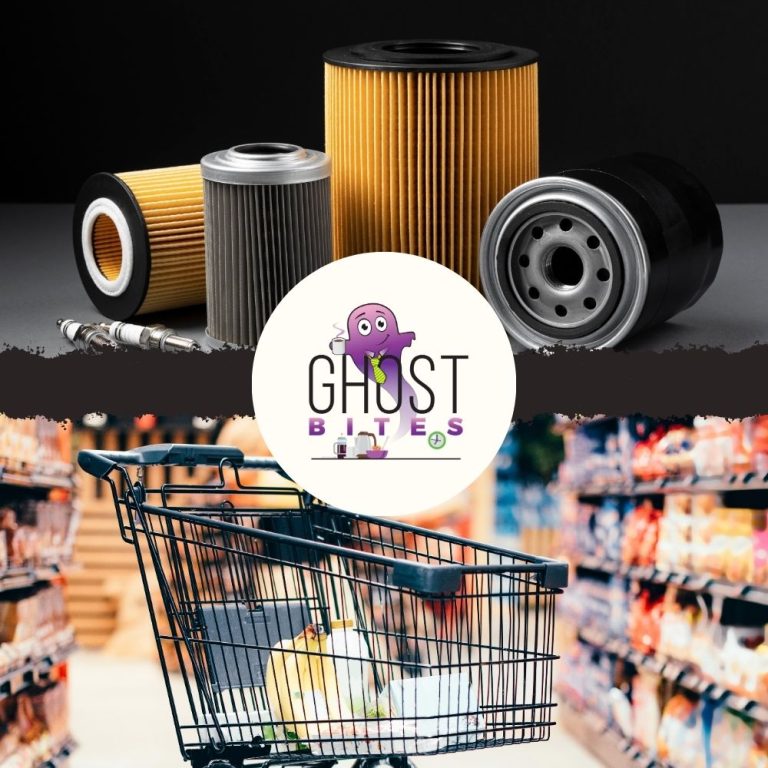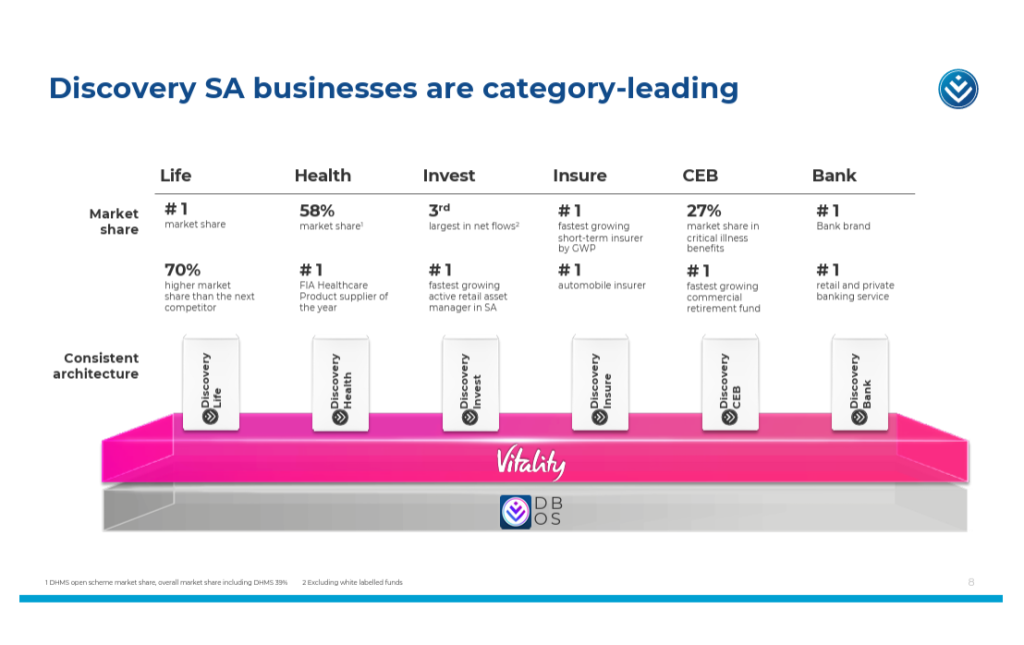We know that global equities have outperformed global bonds and money market investments over the long term, but this comes with the risk of higher volatility. The current investment climate has also called into question the traditional 60/40 approach to a balanced portfolio, with problematic correlation for investors.
With a track record in structured products spanning 23 years, Investec has seen practically every type of market cycle play out. As a response to relative global equity valuations across multiple regions, Investec (in its capacity as investment advisor and promoter) brings you Advanced Investment Holdings.
This is a Guernsey-based structure that holds a portfolio of the S&P 500, Euro Stoxx 50, Nikkei 225 and FTSE 100 indices. Over a term of five years and one month, the investment offers full downside protection (100% capital preservation at maturity in USD) and will multiply the upside by 125% (to a maximum return of 50%).
Japie Lubbe brings his extensive experience to this discussion, explaining exactly why Investec has taken this approach to structured equity exposure in the current environment. He also explains the nuts and bolts of the structured product and exactly how the returns and risks work.
Applications close on 28 November 2025. As always, it is recommended that you discuss any such investment with your financial advisor.
You can find all the information you need on the Investec website at this link.
Disclaimer
Listen to the podcast here:
Transcript:
The Finance Ghost: Welcome to this episode of the Ghost Stories podcast. It’s going to be a really interesting look at a new structured product that is coming your way from the team at Investec. And we’ve got Japie Lubbe on this one which is always exciting because Japie, you have been doing this for a quarter of a century as you pointed out to me before we jumped on to start recording. So that is an amazing innings – well done! You’ve basically been at Investec since the beginning of Structured Products there, right? You essentially launched this business with them.
Japie Lubbe: Yes. At that stage, you may remember we’d had the big ‘99 crash and 2002 was also a bad time for equities. So when we launched the product range we were initially focusing a lot on downside protection. Subsequently over the years we’ve had markets improving a lot and after the GFC we had like 13 years – what I refer to as Goldilocks years: porridge is always half warm. In that phase we introduced the autocalls and the digital notes and some of the others that you’ve had us on air, where in that type of product you do take some downside risk if markets move down by a certain percentage. And that’s served us well because it’s been a very long bull market.
This one we’re going to be talking about is one back to the product range where you have full protection just because at the moment our view is markets are quite high.
The Finance Ghost: I just want to touch on one or two of the points from the track record because it’s actually in the presentation that Investec has made available for this particular product. So roughly 126 public products over that period of which none have incurred a loss for investors. Absolutely none. So that is a fantastic track record – well done!
Four of them have returned capital to investors. So if we’re going to get technical, obviously their investors would’ve been on the wrong side of inflation, they kind of just got their money back. But that’s still a really decent outcome versus what would have happened had they just taken the naked exposure. And 85 with a positive return – so that’s 85 out of 89 matured structures with a positive return. And the remaining products, roughly 37 of them still live in the market, so obviously we’ll wait and see what happens to them at maturity.
So just well done Japie, I guess is the overarching point here. What’s interesting when you look at those stats is positive returns are great – I mean it’s nice to be up, definitely rather be up than down – but what about outperformance of the underlying indices? Because of course that’s the real goal, that’s the really, really big thing to aim for is not just that the returns were positive, you can technically achieve that by just putting your money in an Investec bank account actually and earn some interest – you want to outperform.
What’s been the journey with that? You’ve been there from the beginning. There’s no one better to talk to that than you.
Japie Lubbe: Yes. So we have three listing platforms. We have the Johannesburg Stock Exchange, we have the Dublin Stock Exchange for hard currency notes. Those two products are on Investec’s balance sheet, so the investors are taking Investec risk, Investec issues them with a note. And then we have the Guernsey companies listed in Bermuda. And these companies are totally independent companies. Investec doesn’t own any assets in them. They’re totally independent. That will be the one that we’ll discuss today.
So across these three platforms, of all 89 products that have matured and they’re shared amongst the three platforms, on the JSE our returns have been – average across all the matured products – 11.6% per annum. And the benchmarks that were the underlying assets of the indices that we’re tracking was 6.4%. On the Dublin market, this is now non-rand, so mostly US dollars – this has been a shorter-dated period, so it has had much more of these good times in markets – our returns were 9.6% and the underlying benchmark is 8.4%. These are the price-only indices.
And in the Guernsey companies we’ve had a very long period of time – we’ve had 23 years, and once again our returns have been in excess of the underlying indices and the extent of it has been that we’ve had – just for the listeners, maybe to start with something, the Guernsey companies is an investment for a five-year term and at the end of five years that share so to speak matures and they can stay and keep the shares or they can sell the shares. And they can also sell the shares intermittently, which will come to you a bit later in the liquidity. But importantly, these shares – over the term we had 23 of these companies – so it’s a Guernsey company, the client buys a share in the company, the shares last five years and the share has 100% capital protection and it has upside linked to markets, which we’ll give an example of shortly. And of those, we had 22 of 23 that matured where the clients made a profit. That’s 96%. They made a profit compared to the underlying indices.
Now we had a look at Morningstar, which has information about the best fund managers and all the fund managers in the world. And across all the fund managers, there have been just under a thousand that were trying to beat the MSCI World over the last five years and 30% could outperform the underlying indices after fees, costs and expenses. And over a 10-year, 34% could beat the price-only index. Our experience with the way we do it has been that we’ve beaten it 96%.
Secondly, when you look at total return, because as an investor you may want to say: how does my performance compare to the total return of the market? Across the 23 companies that we’ve had that have matured, we’ve beaten the underlying performance by 2.58% per annum for a five-year term across 23 companies. Now, the fund management industry, which is not John, Peter or Paul or A, B or C, it’s just the industry – there were only 7.5% of fund managers over the last 10 years that could beat the total return. And because we beat the price only by 2.58% per annum – the average dividend yield on all these underlying companies for all that period was under 2.58% – so effectively, after fees, costs and expenses, net investment to the customer, they beat the total return by doing it the way that we’ve done it here.
Now it’s very important to highlight that this return was achieved with taking the credit risk of the banks that we used. Because in our structure you don’t own the shares underneath directly, you don’t own the bonds directly, you own a share in a company and that company makes investments and for that you’re taking credit risk. But also interesting is that because we’ve done this for 23 years – it’s been a long time – and we know with investments you must always test something over different cycles. We’ve had early years like 2008-12 was a very big GFC crash, then we’ve had some very good years. So it’s good to have a product that you can test its performance over various cycles and over a long period of time.
We found that 30% of our outperformance came from not losing when other investors lost. So in the world of your portfolio management, over a long period of your money, it’s very important that you have a portion – and our offering is always only for 15% to 20% of the total, we don’t put all the client’s money in this – it’s very important to reduce the opportunity for losing. The loss is the important thing to avoid.
Now you mentioned earlier that we had these four where we returned capital – just to give the listeners some sight of it, one of them, the one that had the worst performance in the physical world, the equities that were our underlying indices were down 44% over the five-and-a-half -ear term. That was a five-and-a-half-year one. And our investors got the hundred back. Now if you don’t take a 44% loss, what you do is you take your portfolio actual current value and you can add on top of that the loss you did not incur. So if you lose 44% and I lose nothing and we both go into the market tomorrow morning at spot, because that’s what will happen at the end of five years, if I have a hundred in my hand and you’ve got a statement telling you you’re worth R56, maybe R58 with positive alpha or R52 with negative alpha, but roughly R56, okay, you’ll have a hard time catching up. So this is very important, is that this structure is there to give clients over the long term, and we’ve seen that on aggregate stellar return, and they must allocate an appropriate portion for the risk they’re prepared to take on the supplying banks.
The Finance Ghost: Japie, that’s fantastic. That really does give so much context to this whole story. And I love that you’ve brought up the fees there as well because I think that’s an important part of comparing these Investec products to anything else in the market.
And interestingly enough, even if you look at the index, you actually really need to be looking at an ETF because you can’t just go buy the index, you have to buy it through an ETF which has some fees, low fees admittedly, but something, it’s not zero. Even if it’s 20 basis points, it’s still something and that adds up over time. So that’s the fairest comparison, right, is to actually say, well what is the ETF you could have bought on that index, compare it to some of the structured products and then see where you come out.
And obviously there are pros and cons to everything, as always. An ETF has immediate liquidity, it’s not a multi-year structure. Your minimum, you can go and put in 10 bucks if you want through your friendly local stockbroker.
It’s not that structured products are better than ETFs in every single application at all, but the point is that for the right clients, you are able to actually point to this amazing track record. So congratulations. I think it is, it is very, very cool.
Japie Lubbe: If I could add one further point for consideration in that discussion. If you were to buy an ETF and let’s say an MSCI World ETF for five years and you didn’t want to take the risk that the market goes down over these five years that you were holding it, you can buy a put option. Now, a put option’s like you’re buying car insurance, household insurance, medical aid, you’ll protect an asset, but you’ve got to pay a premium and you’ve got to pay the premium up front.
And we’ve priced it – at institutional level, a premium would cost you 12% of your money. So if you had $100, you’d have to pay away $12 to protect the $100. But you would get the dividends, but you’d only get 88% because you had to pay the $12 up front. So when you look at returns like we’ve had, it’s very important to appreciate that over the 23 years of five-year protection as a separate investment would have typically cost 10% to the investor. If you’re getting these returns and you didn’t take the risk because remember, they were without the risk, then that utility is worth 10% more. Okay, so what this actually proves is because we’ve had cycles where we’ve had down markets and up markets, it’s that inherent value that comes from not having lost, but without having to have paid insurance premiums for doing so.
The Finance Ghost: Yeah, there’s a lot of cleverness in the maths, there’s a lot of cleverness in how this thing actually works. And we’re going to get into the nuts and bolts of the latest product.
But I think before we do that, Japie, it’s such a good opportunity to tap into your extensive market experience. While you were busy launching this thing amidst the dot com bubble and the aftermath of that and everything else, I mean, I was finishing primary school, literally, so it’s always so fun for me to have you on the show because I always get to learn a lot from you as well, which is brilliant. And one of the things that’s been a discussion point in the market recently is that traditional 60/40 split of equities/bonds. Arguably maybe some outdated thinking about whether or not that actually works well as a tool for diversification and growth. It feels like the last few years has been positive correlation between bonds and equities as opposed to the negative correlation that actually makes that work from a diversification perspective. And this is something that you’ve raised in the presentation for the latest product, so this is not just a completely random point, this is something that you guys are thinking about when you put these products together.
I guess let’s just start with what you think is driving this reality where correlations have changed and what risk does that then create for investors if they actually follow the traditional approach and they just blindly do the sort of 60/40. Why is this relevant in your world and why do you think investors need to think about this?
Japie Lubbe: If we have a look in our presentation, we show the last 26 years of total return on equities – MSCI World – versus total return of bonds. And it’s interesting to note that equities obviously have massive gyrations or volatility in five-year type returns. You can have a fantastic time or you can have a negative time. Importantly, the aggregate total return – and this is no fees applied, just the market – was 6.7% per annum for equities and was 3% for bonds. And it follows the empirical knowledge that we have that equities tend to – because inflation was for that 26 years average 2.6% – so bonds had a, let’s say below average type of very long-term returns. Possibly because we had equity interest rates rising in the world in the last few years, but they still gave a real return, bonds.
Equities gave what is on average a 4.1% per annum real return, inclusive of dividends. So it follows that a lot of investors have said to reduce the volatility of the equity, I buy this 40/60 split and although I’m getting a lower return on the bond component, it is mitigating the risk of the equity component. Now we come along and we have a look at this and we say but if you look at the cycles, what you’ve had of late is that you had interest rates go in the world from let’s say the 1.5% / 2% to 4% / 5%.
Interest rates went up across the world after Covid and with the amount of money supply that the governments are putting in to the system. Because remember what they’re doing is printing money and they’re creating more supply of money. So this has the consequence that interest rates went up for multiple reasons. But at such a time then bonds are inversely priced. The bond component of a 60/40 gets hurt when interest rates go up. And when the interest rates go up and the bond yields rise, firstly the bonds’ valuations come down. But secondly the bonds become now – for the new investor – more attractive than equities. So you get a switch, institutional switch from equities to bonds because now they’re anticipating a real return and it’s less risk. So what happens is that the correlation actually increases – both the bonds are going down in price – as a consequence of that, they have a higher yield – and now the equities go down in price because the people are switching out of the equities into the bonds.
And conversely, if the interest rates come down, like you’ve seen in the most recent past, there’s interest rates coming down, now look how hard the equities start running. So the correlation is the rates come down, the bonds are more valuable, they have a higher price and equities go up. Because the alternative to go into bonds is viewed as less, so equities attract more cash.
Okay, so put the two together. We’ve just recently been in a conference in Switzerland given by international players where they anticipate going forward, the anticipated return if you just take historic norms, is about 6.5% per annum for a 60/40 split.
Now what we’re going to show you – what we’re doing here is we create something which has got a maximum return of 8.3%, but with zero downside risk as opposed to the 60/40 split. Because we believe that if you can have equity as your asset class, but have protection on that equity, then over time that’s a good blender. It’s not that you have one or the other, it’s just an addition to the portfolio and the amount that you put in would depend on your client’s personal circumstances.
The Finance Ghost: Would it be safe to say that with the latest product you really are competing with, at least to some extent, balanced funds and that way of thinking? That’s very much where you’re pitching this, right?
Japie Lubbe: Yeah, definitely. And also obviously hedge funds, because hedge funds by definition try and give you a return where your perception is that your capital is more protected because they can take short positions, long positions.
So in a portfolio, an investor would want some racy potentials, let’s say direct equities, hedge funds possibly, and then they’d like some more sort of “sleep well, eat well” stuff where that’s your core portfolio and this is where this competes with the ETF, with the fund managers that are trying to beat the ETF and with the balanced funds.
The Finance Ghost: Super interesting. We know now we’re talking equities, that’s effectively where this latest product is focusing. There’s a basket of indices in it and we’ll talk about that just now. And certainly something that I do when I do my stock picking specifically, which is obviously something I love, I always look at the current valuation multiple versus historical averages as one of the points to look at. If a stock is trading at a P/E of 20x and for the last 15 years it’s been on a P/E of 10x, you’ve got to ask yourself some very, very big questions about why on earth the P/E has doubled and is that remotely realistic? And I know it sounds crazy, but if you look in places like the US market, it really is like that. P/E multiples are sometimes double or more their 10 year averages, less so in South Africa certainly. But in terms of index level stuff and capital allocation to various indices, you would look at those average multiples as well, right? You’re just doing it at index level to say, well, here’s an equity market that relative to historical averages is either cheap or expensive. Is this one of the building blocks in your approach?
Japie Lubbe: Yeah, absolutely. In our presentation we show that the MSCI World All Country Index is currently trading at a price/earnings ratio of 22.1x and the long-term average was 19.5x. On a relative valuation at world index level, it shows that markets are expensive. They’re not massively expensive, that is, they’re not like two standard deviations expensive, but they are definitely expensive. And then in the context of that, the US is really expensive compared to the others.
When we do our products, we’re obviously cognisant that if the market’s so expensive, what you really want to as an investor is be certain that you try and protect some of the value you’ve made by having this capital protection. But importantly, we don’t think that it’s suitable for clients to say, I’m just going to take all the money out the market now, put it in cash. Because the long-term average and the long-term stats show that cash and bonds far underperform equities. And in the context of what’s happening in the world with so much ballooning of debt on national balance sheets, the debt is increasing massively and the counter-side of the balance sheet is the assets. The assets are creating inflated asset values in bitcoin, gold, property a bit less because interest rates are too high, equities.
As an investor it is really penal to say I think the markets are very high, so I’m going to take all the money and put it in bonds or cash. You can’t do that. What you’ve got to do is stay with the equities, but on your allocation, maybe go more for defensive equities, either on a style, or on small cap versus big cap, etc. etc. But in the structured product space, allocate to the structured product which gives you the capital protection in case it’s a bad time, but stays with equities. So that’s really how we’re seeing it.
The Finance Ghost: There’s an important point you’ve made there which is stay with the equities because obviously we all wish we could time the market perfectly, but there is so much uncertainty out there. There are so many things that drive the market, so many geopolitical things, so many things that are just completely outside of even the ambit of what the management team of that company can control or even the country where that index is found could possibly be expected to control.
Volatility is just a feature, not a bug of the market, right? I mean, that’s part of why we can all earn a return from it and why you get paid to be there is because of the volatility. So, staying with equities is important. And yes, you can certainly allocate more in relative terms when something is a bit cheaper. But the problem is if you try and get too cute, which is your point, then you miss the best days in the market. You’ve got to be in it to win it. If you’re sitting on the sidelines and that best day happens without you and then you climb back in, long-term there’s some interesting maths that says that this is not good, right? That approach will hurt you.
Japie Lubbe: Absolutely. In our presentation, we show that if you take the last 20 years of the MSCI World and if you were fully invested for every single day of the 20 years, your total return was 8.2% per annum for the last 20. But if you missed the best 10 days, to your point, then it goes down to 4.9%. And if you miss the best 20 days it goes to 2.7% and if you miss the best 30 days, it goes to 1%. So two points that come out of it, and that is that if you look at from 2005 to now, if you’d been putting a hundred dollars in the market every year and you had the best timing possible, you would have gone to $7,200. If you picked the worst days possible to put your $100 in the market, you would have gone to $5,400. But if you stayed in cash, you’d have been at $2,500. So it is extremely penal to try and time the market. That’s why you know the old saying: it’s time in the market that makes the money.
So two things that come out of this history. Firstly, the fact that if you’d been in every day for the last 20 years with dividends and no fees i.e. like an ETF, MSCI World will have given you 8.2% per annum. This is what we target for our product that we’re doing now. We’re saying if at these levels you can for the next five years get that, but not have to put your capital at risk, that would be a great outcome.
The Finance Ghost: Yeah, it’s very interesting. And this is all of the thinking that obviously goes into the products that you guys put together at Investec. And there’s a few of them every year, well, more than a few. They come through kind of thick and fast and they’re always a bit different, which obviously makes these podcasts really useful and interesting for those particularly trying to just understand what’s going on.
And the latest example is called Advanced Investment holdings, and as I mentioned, this one is focused on various equity indices. So that’s the building blocks of this thing, essentially. I think let’s start there, Japie, if you could just walk us through what is the basket of indices that you’ve decided to allocate to here. And I guess why – what made you choose them? What made you choose those weightings as well?
Japie Lubbe: Sure. So firstly, this is an existing company, it’s called Advanced, and it’s going into its umpteenth phase. The shares, as we said, are issued for five years. The existing investors have now got the chance to roll those shares, lock in all their profits and have a new capital protection level. And they’ve made roughly 60%, last five years, in dollars. Secondly, new people can come in and for new people that come in, the minimum is $12,000. That’s the minimum threshold. It’s a five-year-and-one-month term because you’ve got Christmas coming up shortly and you’ve got 100% capital protection if you stay the full five years.
The upside is linked to a portfolio of indices where the weightings are 35% S&P, 35% Euro Stoxx, 20% Nikkei and 10% FTSE. If you back test that, that’s 90% correlated to the MSCI World Developed Markets. Now we’ve specifically, to your point, underweighted the S&P because our internal valuation is that that one’s very expensive and frothy. So we’d like to allocate less to it because we think the opportunities are better in the other markets.
But we can’t reduce it too much because the US is too important a place in the world. By reducing it to this threshold, we still get to a 90% correlation to the World Index. Now, performance wise, these investors will get 1.25 of what the index does until the index hits 40 on those weightings. And that’s all in US dollars.
Now, just because markets are volatile and the like, what we have done at Investec, we’ve hedged out the risk to interest rates for a portion of this, but we don’t know how much we’ll sell. We normally sell very large trades. So we reserve the right to make the 1.25 as low as 1.15.
But what this means is that if the market did 40 just on the current pricing at 1.25, the investor would make 50. So it’s like saying to you, you buy a share and if the stock exchange goes down 40, you get your $100 back and you can buy the market the next morning, it’s priced at 60, with 100 in your hand, if it crashed.
If it went up, then to avoid you feeling that I could have picked the shares better myself or gotten someone to manage my money, you’re getting 1.25x what the index does. Bearing in mind that we said only 34% of the fund managers after fees, costs and expenses could give you one for one. So now you’re getting 1.25 for one and you’re getting this until the index is 40.
Now why 40? Because if we said looking in the history, the average 5-year total return on the market was 6.7 and if you compound that number, it comes to 38/40. So we’re saying if the market’s already high and you take what they did, bearing in mind that they had all-time highs, okay, the history and if you can get that as an average return, it’ll take you to 40. You compound that now with 1.25. You’re getting 50, getting 10% more, which is in fact more than the anticipated dividend yield because the dividend yield is about 2 per annum.
So it’s like you can now get the total return, okay, but you are going to lose out if the market does 55 or 60. But you just got to ask yourself, what’s the likelihood? And remembering now, this is part of your portfolio and so you’re not going to be very unhappy if you can get 50% in dollars over five years from these levels. That’s really the makeup of it.
How we do it, maybe just to go to the maths, is we get the money into the company. Let’s say that’s $100 / $200 million. We’re going to take roughly 75.9% of that to buy a credit-linked note from a bank. And we’ll go through the credit in a moment and that over the five years grows to 100. Now, this company that we have in Guernsey that we put the money into, we’re the investment advisors to the company, Investec, and that’s our only role. The bank doesn’t own shares in this company.
So the 75.9 grows through to 100, and we put 7 aside for fees, costs and expenses. That’s for the distributors, for us, and Grant Thornton as auditors, because this is a highly regulated company. It’s regulated in Guernsey, Bermuda and South Africa under the Companies Act and it’s been signed off. The 7 amortises to 6, 5, 4, 3, 2, 1, 0 over the time. Not all up-front, gradually.
And then lastly, we’ve got 17 left over. If you take the first two numbers from 100, there’s 17. And what we do with the 17, we’ve got a panel of major banks. They have to have a credit rating of S&P A or better to price to us. And we say to them, if we were to buy a call option, what would it cost? A call option gives you 100% based on 100 of whatever the index does. And so that would cost 17 as we speak, we said, and if we sell you a call option at a level of 140, they say, well, we’ll give you a rebate. And the rebate is 3.4. So it follows that if something costs 17 and you take 3.4 off that, it’s 13.6. But you still have 17 cash flow in your hand, so you can buy 1.25.
So that’s how simply the leverage works. It’s not like many hedge funds do where you borrow money from a bank. We’re not incurring leverage by borrowing money which has an interest charge associated and which could be favourable or not favourable. It’s just absolute cash premium.
The two things to observe here is the fact that the fees, the 7.1 are part of the original hundred, so we say they baked into the cake. Secondly, that this structure has no outperformance fees. It doesn’t enable Investec to charge the client because they made a lot of money, more than some threshold – all the returns accrued to the client. And because we’ve got this open architecture in our company, in other words this company can buy the debt from any one of five big banks, it can buy the options from any one of five or six big banks. And we’re the option structurers at Investec, we can get the best price from the best bank, so a shareholder goes in for $12,000, gets price calibration for a $200 million investment because they just own the same shares as anybody else in the market.
Whereas the small client if they try to go and engage a bank and buy their own product then they wouldn’t have the same buying power, they wouldn’t have the same ability to leverage volumes. And this is what we do for our clients.
So that’s really the mechanics of that, how it works. And after five years – let’s quickly fast-forward five years, the stock exchange can only be up or down. It’s like life, you’re either lucky or you’re unlucky. If you’re unlucky, it went down. If it went down 40, you say fine, let’s accept that. But now I’m getting 100 back and I can buy the market at 60 the next morning, saving the loss. Secondly, if it’s been positive, you can say, well, I’ve made good money. I’m still at an age where I need equity, I must always have equity and I roll the share. If you roll the share, whatever profits were made in that phase is now included in the new capital protection that you have for the next phase.
In this manner, you can stagger like five-year intervals and just sit out one day when there is a crash, if there is a crash. 200-year equity history shows that problems come, but they come like a thief at night. You don’t know when they’re going to come. It’s very important – and this is why at Investec you’ve seen we have eight of these companies so that every six months, every nine months, there’s one rolling. So every six or nine months you’re locking in whatever you made for that period. If there is a correction, you only lose the amount that has been growth above where you last locked in.
And this you can’t do with equities or ETFs or unit trusts. You’ve got to take your chances. And if you want to make the money, you got to sell the investment. When you sell an investment, you’re liable for tax – only when you sell the investment.
The one thing I would just like to quickly cover as well as the credit. So who do we buy these bonds from? How does it actually work? We have a panel of five banks where we can potentially buy the note that protects that capital. And those are depicted in our documentation and include Citibank, Goldman Sachs, Morgan Stanley, Bank of America or BNP Paribas.
They issue us a note and then in that note they reference five of six banks that we agree with them. The reference is to the tier 2 debt, the debt that’s subordinate to the depositor. This debt ranks ahead of ordinary shares, preference shares, perpetual debt. Now, no bank that we know of since the GFC has actually defaulted on this type of debt. This debt is all investment grade ranked worldwide debt. But what we do to make the risk as low as possible is we allocate 20% to one of five names. And the five are Deutsche Bank, Commerzbank, SocGen, Barclays, Standard Chartered and Santander Bank. The actual debt is rated in the market by rating agencies and it’s all investment grade rated, much better than our SA government rated debt, because our sovereign isn’t at that rating.
So what happens if something happens with one of these reference entities, let’s say Santander, I’m just using an example? Then there’d be a recovery percentage on that debt and that would be a total of 20. So let’s say you recovered 50%, you’d lose 10. But the equity share upside is independent of the debt. As I say, over all those that we’ve done in history, none of those are defaulted. And, worst case, if as a shareholder you weren’t happy with Santander, intermittently you can sell your shares.
The Finance Ghost: Japie, so much experience coming through there, which I just love. I think, to maybe anchor people back to the underlying equity indices that you’re using here. The one thing I just want to highlight, underweight S&P certainly versus what a lot of people – not necessarily relative to the others in your basket – but certainly relative to what most people hold right now. And I think that’s an interesting point because it’s quite nice diversification for people who are sitting with very tech heavy, US heavy portfolios, which I would wager is most South Africans – when they go offshore the default setting is “I want the US” and that has worked really well in the past few years. That’s exactly where you wanted to be.
But the point is that a lot of those valuations have gotten to a stage now where if you back up the truck and you go and buy a ton of S&P 500, there’s no guarantees that you’re going to do well. You might even underperform some of the other options in the world. So that’s where a product like this becomes interesting.
The other thing that I think you made clear there, which I always appreciate when you talk through these structures, is it’s not actually a black box. Everything is there in the documentation that deals with the structure in terms of what you do with the money. No one has to guess how you get to the point where there’s downside protection, upside multiplier, etc. etc. It’s all there – fees included. So that’s quite different to – or not quite different, it’s entirely different to how international hedge funds, bluntly, any hedge fund works. You don’t get to see every single thing that’s in the hedge fund all the time and it’s going to change every day. Whereas here, what you’re saying is, look, here’s a return profile. This thing exists today, it’s going to exist for five years, whatever the case may be. Five years and one month this time – and this is what we’re going to do with your money. It’s set out for you. You don’t have to guess, you don’t have to worry, you don’t have to wonder if someone wakes up one morning and had a bad day or makes an emotional trade or all of the other things that come with active management.
Active management done well is amazing. But as you say, the stats tell us that there’s only a portion of active managers who can actually get it right and most of them don’t. So lots of interesting stuff coming through there. And I think maybe this is a good time to talk to just the liquidity because as you said, in life you can either get lucky or unlucky, it’s like the market goes up or down – unfortunately, that is true for life. And sometimes life happens and people do need to get their money before the end of the term. I mean the flip side of that is life goes beautifully and you invest in this thing and it compounds and you roll it. And I’m sure you’ve had clients who have done that from the beginning or hopefully from the beginning, I’d actually love to know that. And then the flip side of that is if something goes wrong, what is the liquidity availability if someone needs to get their money out? Death, divorce, take your pick.
Japie Lubbe: Yeah, sure. So, having done this for 23 years, we have had obviously a number of people who have faced those liquidity requirements. And there are three levels of liquidity. So the first level of liquidity is John wants to sell and Peter’s happy to buy. Willing buyer, willing seller, shares transferable, no costs. And normally this happens at advisor level. The advisor’s got two clients and the one’s wanting to sell and the other one’s prepared to buy. So that’s very simple. That happens maybe 5% of the time.
95% of the time, or 94% of the time, a client wants to sell and we haven’t got an immediate buyer. We have roughly 26,000 transactions on our books, so in other words, our business is now, let’s say R48 billion of assets. And so there’s a huge base of people to understand how this stuff works. We have a secondary market process. And what we as Investec do is we provide market making function whereby we buy – this is the second level of liquidity, which is mostly utilised, you want to sell the shares, it’s the prevailing price, that day’s price, less 1.25%. Much like if you sell your Sasol, your Anglos, you’ve got a back-end fee to get out.
So there is a process that follows – it’s normally about a week or 10 days to do it because we’ve got to notify the directors in Guernsey. It’s not like you’re picking on-screen, you sell your Sasol and tomorrow morning you got the money in the bank account. It’s not that liquid. It’s not as liquid as a traded stock, which you would expect to sell today and tomorrow you see the cash in your account. But we’ve not had any clients who’ve tried to sell over the 23 years and not been able to sell.
Now the third level of liquidity is we have a portfolio that we can utilise to buy this.
If we are full up on our capacity or we don’t like the share, then what we do is we unwind the underlying assets. Because remember, we’ve bought a bond, the bond’s got a value in the market, that’s how we pricing it daily. And options are provided by bank which we can provide liquidity requirements with that bank when we trade with them. We say if we want to sell these options back to you, you’ve given us a daily price. And we agree with them that they’re prepared to buy this back because this is very infrequent and small compared to the trade size. To put it into perspective, let’s say of these Guernsey companies, the ones that we’re talking about Today, we’ve got $1.8 billion in our book. We maybe have $1 million, $1.5 million available on stock. Because what happens with options is often a lot of value comes in at a latter stage of a five-year term. If you’ve heard of the J-effect of options or hockey stick effect. And so that’s when secondary buyers we see line up to buy and we’ve got specialist people have worked out how the secondary pricing works and are always on the lookout for the low hanging fruit.
So it is not clever to sell early, but you can sell early. And why it’s not clever is invariably certain of the setup costs have been incurred, certain of the annual fees that have to be deducted have been deducted. And most importantly, certain of the option profits will come at maturity when there are no bid-offer spreads on the debt or the equities. So we haven’t had anybody try and sell and not be able to get out.
The Finance Ghost: That’s again a really important part of the track record I think, because life does happen and it’s important that people understand they are signing up for something that has a minimum term here, but in the event of, you know, some kind of disaster, it’s not handcuffs, you can at least get out even if you have to take a little bit of a knock at the time.
Not really that different to anything else you might own, but maybe just slightly different.
I think maybe to start to bring this to a close Japie, those who are listening to this thinking “hmmm that’s a good idea, I’m interested” – how do they go about investing in this product? Do they need to always go through an advisor. Can they contact Investec directly? You mentioned the minimums earlier, but maybe worth just highlighting again just in terms of people getting their money into this thing.
Japie Lubbe: Yeah, so the shares are issued to three decimal points. You can invest $12,000 or more. It’s like you can invest $12,200 or any number bigger than $12,000 and it’s just the allocation of the shares. So these shares can be purchased with the R1 million allowance per annum or R10 million that you can clear through SARS. People can buy in a company, in a local trust using asset swap and Investec and other organizations have asset swap capacity whereby you give them rand, they convert it for you to dollars and then they make the dollar investment. It can be purchased from offshore. So if the investor has a trust offshore or a company offshore, these companies have an ISIN number so they can be bought on online platforms.
I think the best would be anybody who’s interested is just to revert to us. We’ll ask them a few simple questions. If they are clients of Investec Bank there’s a process that they can follow through our private bank and through our My Investments platform. If they’re external we can chat to them and make sure what’s the quickest, easiest way for them to access the shares. But we do have 320 companies, distributors, 320 different organisations. So invariably if they ask their financial advisor, there’s a very good chance the financial advisor is one of our distributors. We will check that with them and give them guidance.
Because it closes on the 28th of November – so practically we want to close on the 28th of November, there’s ample time to clear these matters in advance – but you do need to give a FICA and let’s hope that we get off the greylisting, that would be a big advantage, so you have to go through that. And you may need a distributor or you may not depending on your circumstances. If you want advice, we have got access to roughly 2,000 financial advisors that we can put on depending where you live to make sure that you put an appropriate portion in and you have liquidity and all the other good things you need. But you know we’ve got some savvy investors who want to just invest directly and our process caters for both.
So we’ve got a team of six people that can easily respond, they indicate that they’ve got any requirements and the information that we’ve discussed here, both our 23-year track record, so the history of the products, plus the actual frequently asked questions which you and I have taken snippets out of, is available if they want to get the material, have a read up, ask some more questions, we’re available to answer.
The Finance Ghost: Brilliant, Japie, I will include the link to that in the show notes and yeah, I think we’ve done a great job of really just running through not just the nuts and bolts of this thing, but also the thinking behind it that leads you to the way you build these products, the goal, where they fit into a portfolio, how to access them and what they do. So thank you – I think it’s been a really good run through of the latest product.
I don’t really need to wish you luck because you’ve been doing this for 25 years and you’ve done 126 of them and counting, so I think you’ll be okay on this one. But thank you as always for I guess for just bringing the story to the Ghost Mail audience.
And I would encourage listeners, obviously do your research, speak to your financial advisor, all of the usual T’s and C’s, disclaimers, caveats apply. The track record here is incredibly strong and so obviously this is something that I think you could certainly at least consider as part of your broader capital allocation strategy as you look to build wealth in this uncertain and slightly chaotic world that we live in.
So Japie, you’ve seen plenty of that chaos over the past 25 years, you’ve seen a lot of good stuff too. You bring all the experience to this chat and it shines through every time. Thank you for making time and as I say, good luck with getting this one across the line and enjoy what’s left of your 2025.
Japie Lubbe: Thank you and thanks to you and your listeners.
This podcast is for informational purposes only and does not constitute advice. You must speak to your independent financial advisor before investing in any product, and especially this one. Investec Corporate and Institutional Banking is a division of Investec Bank Ltd, an authorised financial services provider, a registered credit provider, an authorised over the counter derivatives provider and a member of the JSE. Ts and Cs apply to this product and you should refer to the Investec website for full details.







